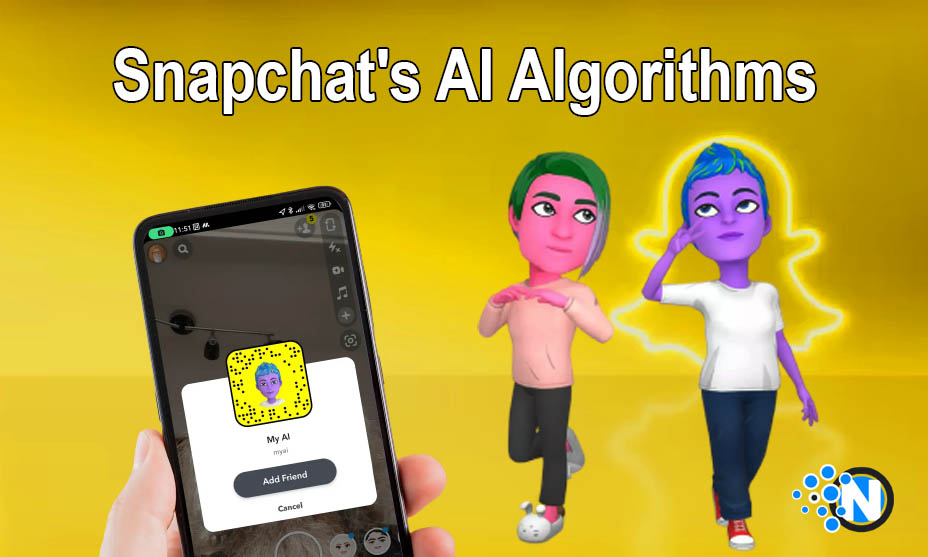Snapchat’s AI Algorithms and Object Recognition

There is no need to introduce it to the users as this social application has built its reputation in the world as a brilliant image and video-sharing platform. With time, it has gone through several developments and improvements. The integration of Snapchat AI algorithms has further improved its functioning. Now, it is widely used as an AR platform to recognize different objects to enhance the shopping experience of the general public. We have developed this guide to help you learn about the various aspects of this app’s AI algorithms and object recognition techniques.
Importance of Snapchat’s Object Recognition
Object recognition is a technique that allies machines and tools to identify different items and classify them according to specific categories. Artificial intelligence plays a significant role in improving the quality and functioning of these tools. Snapchat has also launched its object recognition technique to make sure that people can find ease in identifying the objects present in videos or images. The integration of AI algorithms has further enhanced the performance of this technology and improved its use cases. In the under-section, we have elaborated on the importance of object recognition in Snapchat.
1 – Augmented Reality
Object recognition has made Snapchat one of the most famous Augmented Reality (AR) platforms. Consequently, people can use this easily accessible application to perform online shopping more impactfully and precisely. With the help of different lenses, the object recognition mechanism, along with artificial intelligence, helps the app understand other surfaces, faces, and items. By creating virtual elements overlaying the fundamental elements, Snapchat enables you to determine the most suitable item for your home or office through AR effects.
2 – User Engagement
Although Snapchat is already functioning at its best and delivering exceptional experiences to its larger user base, object recognition has added more flavor to its popularity and functioning. By identifying different components present in the images and videos of the people, the app processes AI algorithms to create more personalized lenses and filters that can resonate with the preferences and interests of the audience. Thus, this makes this app more appealing to the general public.
3 – Content Moderation
One of the main reasons for the increased fame of Snapchat is because of its effective content moderation technology. Artificial intelligence helps in identifying the elements and content which is inappropriate for some users. Hence, their quick removal ensures transparency and a safe experience on this platform. It also maintains a safe and user-friendly environment to work in.
How Snapchat Trains its AI Algorithms?

As we described previously, Snapchat has launched its object recognition technology through the integration of AI algorithms. However, it will always be challenging to train these algorithms to deliver the desired outcomes. The whole process is quite complex and resource-intensive, requiring careful consideration of different stages. On the other hand, Snapchat follows a pretty effective strategy. The following section will help you understand the entire process of how this app trains its AI algorithms for object recognition.
1 – Data Collection
Data collection is the most integral part of developing AI algorithms. It is important to note that AI works on pre-integrated data. Therefore, it is necessary to provide it with accurate and precise information. Otherwise, you will get false outcomes. Snapchat’s developers are well aware of this fact, and they search a diverse range of platforms to collect information and then add it to the infrastructure to create more versatile and accurate algorithms.
2 – Data Annotation
Data annotation is something exclusively opted for by this high-quality social platform to generate AI algorithms. This process lets you label the data by tagging different objects, such as objects, faces, and scenes in the images and videos. Hence, these annotations play a key part in training and evaluating the data by serving as the ground truth data.
3 – Model Development
Another critical step in the development of artificial intelligence algorithms for object recognition is model development. Snapchat’s data scientists and engineers focused intensely on constructing deep learning models to perform this operation. Generally, the platform has incorporated the Convolutional Neural Networks (CNNs) for image-based tasks. Also, they are utilizing the power of several other high-end technologies to deliver highly productive customer experiences.
4 – Model Training
In the next step of training AI algorithms, the models elaborated on in the previous section are labelled using different high-quality hardware such as GPUs and TPUs. It not only enhances their functioning and parameters but also opens the door to more precise outcomes by reducing the chances of errors. In this way, there are minimal chances of getting false object recognition while utilizing the AR power of Snapchat.
5 – Validation and Testing
After developing and training the models, they are passed through a comprehensive testing procedure to identify the functional capabilities and flaws present in them. They are validated and then tested on separate datasets to evaluate their accuracy. If errors exist in the outcomes, the trainers repeat all the processes completely to find the point in which the error exists. Hence, by working more attentively, they eliminate them to make sure that users don’t find anything worth non-functional.
6 – Continuous Improvement
Snapchat’s AI models are continuously improved based on the outcomes that appeared during testing. Also, the developers are highly active in their functioning to check if there is any vulnerability in the infrastructure. If it exists, they work through more impactful training processes. As more data is collected and more annotations are made, the models become more accurate and capable.
Final Verdicts
Snapchat emerged as one of the best platforms to utilize the power of object recognition and identify different elements present in images or videos more precisely. Further, it leads to AR technology that helps you to perform online shopping more effectively and precisely. The integration of artificial intelligence algorithms has further improved the functioning of this technology and enables the app to personalize and moderate the content to ensure engagement and transparency. Besides, the developers are addressing different challenges to ensure privacy and safety in this fast-paced online world.




